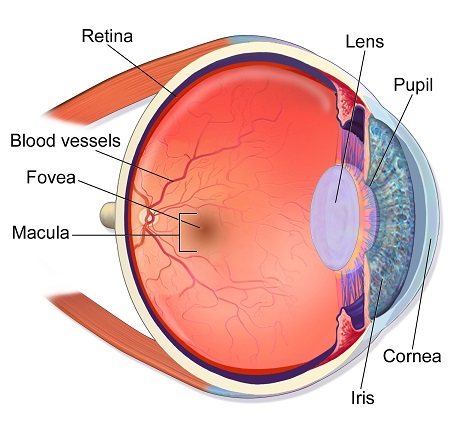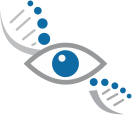
The inherited retinal dystrophies are a group of potentially blinding diseases that affect millions of people worldwide. These include retinitis pigmentosa, Stargardt’s disease, Usher syndrome, Leber’s congenital amaurosis, and many more. As the name suggests, these conditions are hereditary and can be passed on within families through their genes. (To learn more about genetics, visit the “Basic Genetics and Heredity” section of our site).
Specifically, the inherited retinal dystrophies involve mutations in genes that affect the retina, which is a thin layer at the back of the eye that is responsible for capturing light and and converting it to the biochemical signals transmitted to our brains that ultimate result in vision. There are hundreds of genes responsible for the development, maintenance, and function of the different portions of the retina, and mutations in any of these can result in disease. As such, one can imagine that depending on the mutation, there are a wide variety of diseases that can result from mutations in genes that affect the retina.
The photoreceptors are the most important cells in the retina. They are the cells responsible for the process of capturing light and converting it into the images that we perceive. There are two types of photoreceptors; cones and rods. Many genes are specific to cones or rods, and as a result some mutations cause diseases that affect mostly cones, rods or any combination of both. Cones are responsible for fine, central vision, as well as colour vision in the light. Rods, on the other hand, mediate our vision in the dark and are responsible for our peripheral vision. Therefore, diseases affecting cones will usually cause decreased central vision and problems with colours, whereas conditions affecting rods will cause tunnel vision and night blindness. To learn more about the specific inherited retinal dystrophies, see the following pages.
